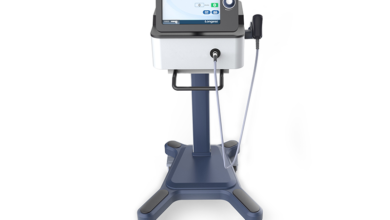
In today’s technology-driven world, network observability has become an essential part of modern infrastructure. It involves collecting, analyzing, and visualizing data from a network to gain a deep understanding of its performance, security, and overall health. Network observability platforms have emerged as a critical tool for businesses to monitor and manage their networks effectively. In this blog, we will discuss what a network observability platform is, its importance, and how it can benefit businesses.
What is a Network Observability Platform?
A network observability platform is a set of tools and technologies that allow businesses to monitor and analyze their network infrastructure, including servers, applications, and devices. It uses a variety of techniques such as telemetry, log data, and network packets to provide real-time insights into network performance, security, and overall health. The platform provides a unified view of the network, enabling businesses to detect issues before they become critical and resolve them quickly.
Why is Network Observability Important?
Network observability is critical for businesses in several ways. First, it allows them to monitor the performance of their network infrastructure in real-time. This ensures that businesses can identify and address any issues that may impact the availability and performance of their services. For example, if a server goes down or an application fails, businesses can quickly detect the issue and resolve it before it affects their customers.
Second, network observability provides businesses with valuable insights into network security. With the increasing number of cyber-attacks and data breaches, businesses need to have a robust security posture to protect their network infrastructure. Network observability platforms allow businesses to detect and prevent security threats by analyzing network traffic and identifying any unusual activity.
Third, network observability provides businesses with valuable data that they can use to optimize their network infrastructure. By analyzing network performance data, businesses can identify areas where they can improve performance, reduce latency, and increase reliability. This can help businesses to deliver better services to their customers and stay ahead of their competitors.
Benefits of Network Observability Platforms
There are several benefits of network observability platforms for businesses. These include:
- Improved Network Performance: Network observability platforms provide businesses with real-time visibility into their network infrastructure, enabling them to monitor and optimize performance. This can help businesses to deliver better services to their customers and improve overall customer satisfaction.
- Enhanced Network Security: Network observability platforms allow businesses to detect and prevent security threats by analyzing network traffic and identifying any unusual activity. This can help businesses to protect their network infrastructure and prevent data breaches.
- Better Network Management: Network observability platforms provide businesses with a unified view of their network infrastructure, enabling them to monitor and manage it effectively. This can help businesses to detect and resolve issues quickly, reducing downtime and improving network availability.
- Cost Savings: Network observability platforms can help businesses to identify areas where they can optimize their network infrastructure, reducing costs and improving efficiency. This can result in significant cost savings over time.
Choosing the Right Network Observability Platform
Choosing the right network observability platform can be challenging, given the variety of options available in the market. To make an informed decision, businesses need to consider several factors, including their specific needs, budget, and technical expertise. In this section, we will discuss some of the key factors businesses should consider when choosing a network observability platform.
- Data Collection: The first factor to consider when choosing a network observability platform is how it collects data. Businesses should look for a platform that can collect data from a variety of sources, including network packets, telemetry, and logs. The platform should also be able to collect data in real-time, enabling businesses to detect issues quickly.
- Analytics Capabilities: The second factor to consider is the analytics capabilities of the platform. Businesses should look for a platform that can analyze data in real-time and provide valuable insights into network performance, security, and overall health. The platform should also provide customizable dashboards and reports, enabling businesses to visualize data in a way that is meaningful to them.
- Integrations: The third factor to consider is the platform’s ability to integrate with other tools and technologies. Businesses should look for a platform that can integrate with their existing infrastructure, including cloud services, security tools, and monitoring solutions. This can help businesses to achieve a unified view of their network infrastructure and streamline their operations.
- Scalability: The fourth factor to consider is the platform’s scalability. Businesses should look for a platform that can scale to meet their growing needs, without compromising on performance or functionality. The platform should be able to handle large amounts of data and support a growing number of devices and applications.
- Ease of Use: The fifth factor to consider is the platform’s ease of use. Businesses should look for a platform that is easy to set up, configure, and use, without requiring extensive technical expertise. The platform should also provide a user-friendly interface, enabling businesses to monitor and manage their network infrastructure effectively.
Conclusion
In today’s fast-paced business environment, network observability is essential for businesses of all sizes. Network observability platforms provide businesses with real-time visibility into their network infrastructure, enabling them to monitor and manage it effectively. They also provide valuable insights into network performance, security, and overall health, enabling businesses to optimize their network infrastructure and deliver better services to their customers. With the increasing complexity of network infrastructure, network observability platforms have become an essential tool for businesses to stay competitive and deliver value to their customers.





